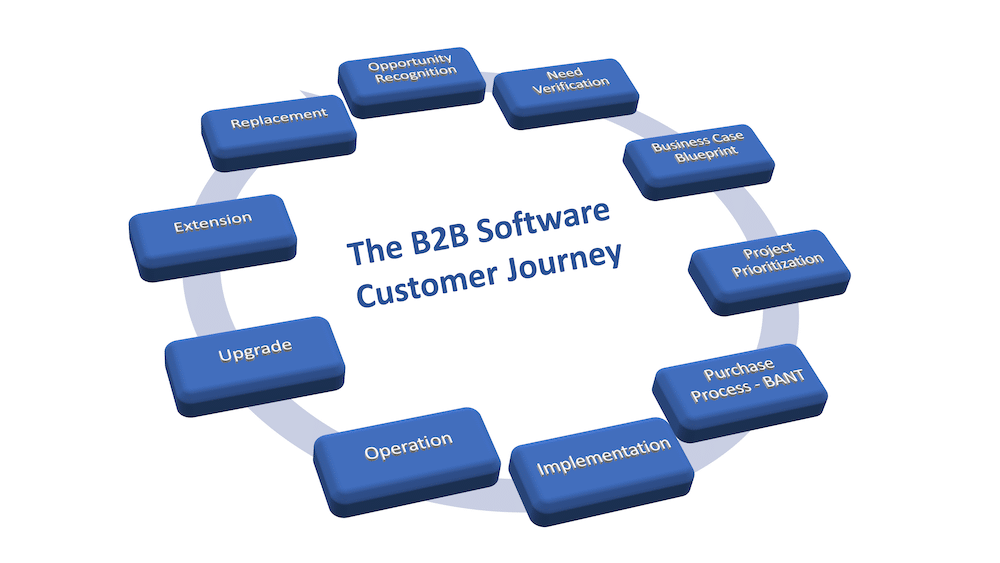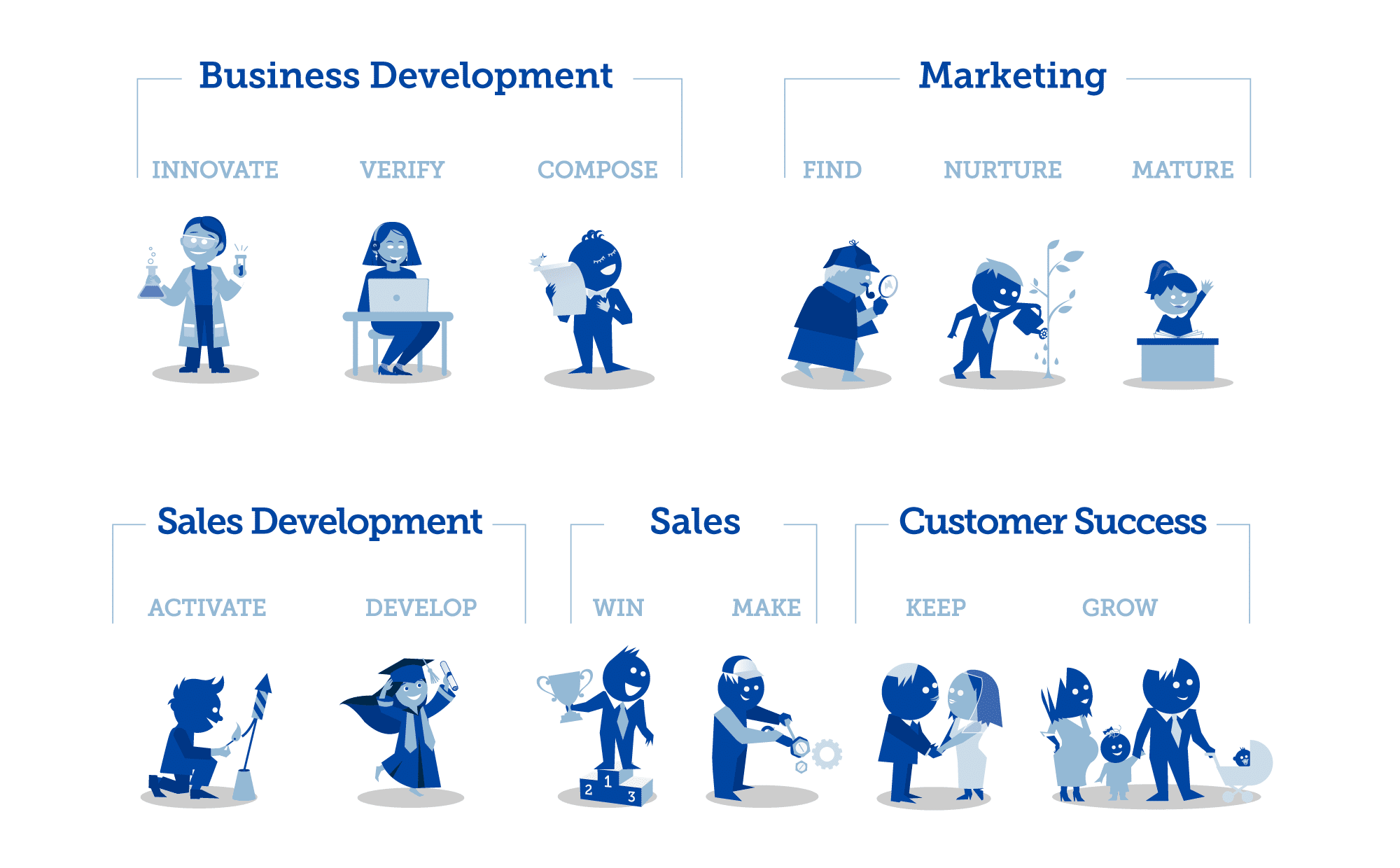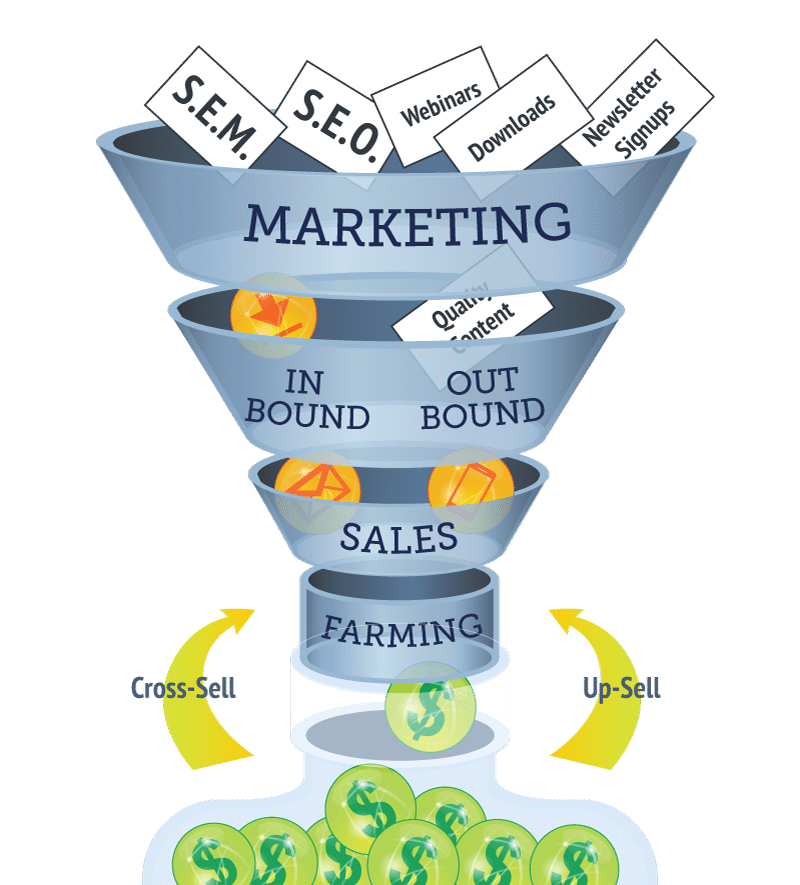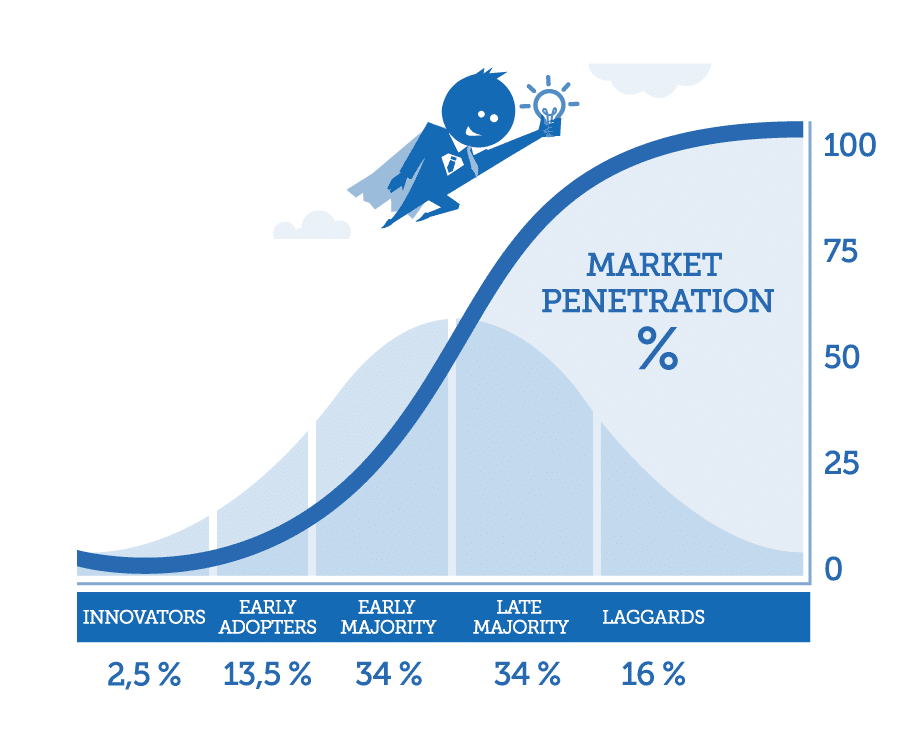In the over forty years I have been working with revenue generation for B2B software companies, we have discussed if and how vendors can activate, accelerate and direct the buying journey of their potential customers. Is there information you can provide, activities you can undertake, behaviour you can display or situations you can create to make more potential customers move faster towards purchasing your software?
You ask such questions because you want to design effective, predictable and scalable revenue-generation processes. As with anything related to changing the behaviour and priorities of others, the answers are complex.
My upcoming book, Revenue Generation Fundamentals, addresses these challenges and devises methods for overcoming them. In this and upcoming articles, I discuss some of the concepts presented in the book, including how viewing the customer journey as three separate phases can help us improve overall revenue generation efficiency. My conclusion is that the better our revenue generation activities can create awareness and stimulate preference in all the steps of the customer journey, the more likely we will win more customers faster.
What is the customer journey?
In my terminology, the customer journey is the process a company (potential customer) goes through from the moment a buying influence becomes aware of an improvement opportunity that could involve your products and services until a solution addressing that opportunity is due for extension or replacement. Then a new journey can commence.
It could look like this:
 Opportunity recognition -> Need verification -> Business Case Blueprint -> Project Prioritisation -> Purchase Process – BANT -> Implementation -> Operation -> Upgrade -> Extension -> Replacement
Opportunity recognition -> Need verification -> Business Case Blueprint -> Project Prioritisation -> Purchase Process – BANT -> Implementation -> Operation -> Upgrade -> Extension -> Replacement
Designing effective, predictable and scaleable revenue generation processes for anything requires a thorough understanding of the customer journey. All the activities we undertake within functions such as business development, marketing, sales development, sales, account management and customer success must facilitate how we believe customers, potential and existing, initiate, prepare and make purchase decisions.
 The better our revenue generation organisation, as illustrated above, can create awareness and stimulate preference in all the steps of the buying journey, the more likely we will win more customers faster.
The better our revenue generation organisation, as illustrated above, can create awareness and stimulate preference in all the steps of the buying journey, the more likely we will win more customers faster.
The main challenges
When it comes to generating revenue for B2B or business software, that does not already enjoy widespread market recognition, we are faced with the following challenges:
- The shift from paid perpetual licenses to the SaaS format has changed the cash flow profile of deals. SaaS cash flow is slower. Controlling CAC (customer acquisition cost) becomes a critical management task.
- The Law of Diffusion of Innovation affects the customer journey for B2B software, especially new solutions from new vendors.
- When a project becomes mission-critical, mitigating perceived project risk predominately takes priority over other solution capabilities.
- The various steps in the customer journey are influenced by more than one person. We call such situations complex, and the people involved are “buying influences”. Although there are some commonalities, the situation differs from company to company.
- Our generic value propositions may generate interest, but they do not drive purchase decisions. Each client needs a customised business case to complete the project and select and approve the vendor.
One of my recommendations is to view the customer journey as three separate phases:
Phase 1: Pre-Purchase Inertia (Opportunity recognition -> Need verification -> Business Case Blueprint -> Project Prioritisation)
Phase 2: Purchase Process – BANT
Phase 3: Post-Purchase (Implementation -> Operation -> Upgrade -> Extension -> Replacement)
Phase 1: Pre-Purchase Inertia
For potential customers in phase one, the buying influences still need to be organised to recommend initiatives within the domain where your software could be considered.
How receptive the buying influences are to information about the opportunities you and your competitors offer will differ across companies. The vast majority will probably not be aware of any opportunity, and they will not know that you exist. But there will also be situations where the level of awareness is high, but the urgency is considered low compared to other project opportunities.
For B2B software, most of your potential customers are in pre-purchase inertia. With a replacement cycle of ten years, as an example, 80-90 per cent of your potential customers will be in this phase.
Phase 2: Purchase Process – BANT
Potential customers in this phase have decided to assign a budget (B) to a project that could involve your software. People have been appointed to drive the project (A for authority). A business case has been outlined (N for need), and a timeline (T) has been proposed.
With a replacement cycle of ten years, 10 per cent of your potential customers will be in this phase.
Phase 3: Post-Purchase
For most B2B software, the solution is completed after the purchase decision has been made. Activities such as software customisation, data migration, integration, change and project management, training, pilot project and roll-out are part of the initial implementation. Upgrades, support and extensions are activities required for the ongoing operation.
After implementation, the customer moves into pre-purchase inertia again and may stay there for years.
Lead Generation
 Although effectively facilitating all three phases of the buying journey is required for optimal revenue generation (with the best possible gross margin), most B2B companies typically need help with phase one. How to create awareness, stimulate interest and raise the desire to a level where the buying influences within potential customers take action and formulate a project that drives towards BANT.
Although effectively facilitating all three phases of the buying journey is required for optimal revenue generation (with the best possible gross margin), most B2B companies typically need help with phase one. How to create awareness, stimulate interest and raise the desire to a level where the buying influences within potential customers take action and formulate a project that drives towards BANT.
We also call this activity “Lead Generation”.
Lead generation is a challenge because:
- Buying influences are hard to identify as they differ from company to company
- Buying influences have different interests and priorities (the Law of Diffusion of Innovation).
- Product and company-centric information is ineffective in making buying influences aware of an improvement opportunity.
- Producing problem/solution-oriented content (which is effective) requires domain expertise.
- Getting problem/solution-oriented content to the attention of buying influences requires technical marketing skills.
- Measuring the impact of lead generation activities requires analytic skills.
- Measuring lead progress involves ongoing data collection, analysis and interpretation.
- While lead generation requires experience and specific skills, it is often left to inexperienced junior staff.
Despite the above-mentioned issues, effective lead generation is the first challenge that must be solved. With a steady stream of qualified leads, successfully optimising the subsequent sales and post-sales processes into a scalable and predictable revenue generation model becomes much more likely.
Prescribing the medicine
If you are disappointed with your revenue generation capabilities, have difficulty predicting future revenue flow and need to reduce customer acquisition cost, then start by looking closely at your lead generation capabilities vis-a-vis those of your potential customers that are in pre-purchase inertia.
Across your pipeline of identified opportunities, at least 75 per cent should be in pre-purchase inertia.
Concentrate your efforts here until you reach that level.
In the next article, I will elaborate more on how you can make your lead-generation activities more effective without needing a big budget.
This article was published first on the TBK Consult blog.

